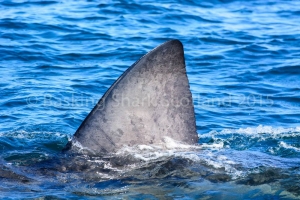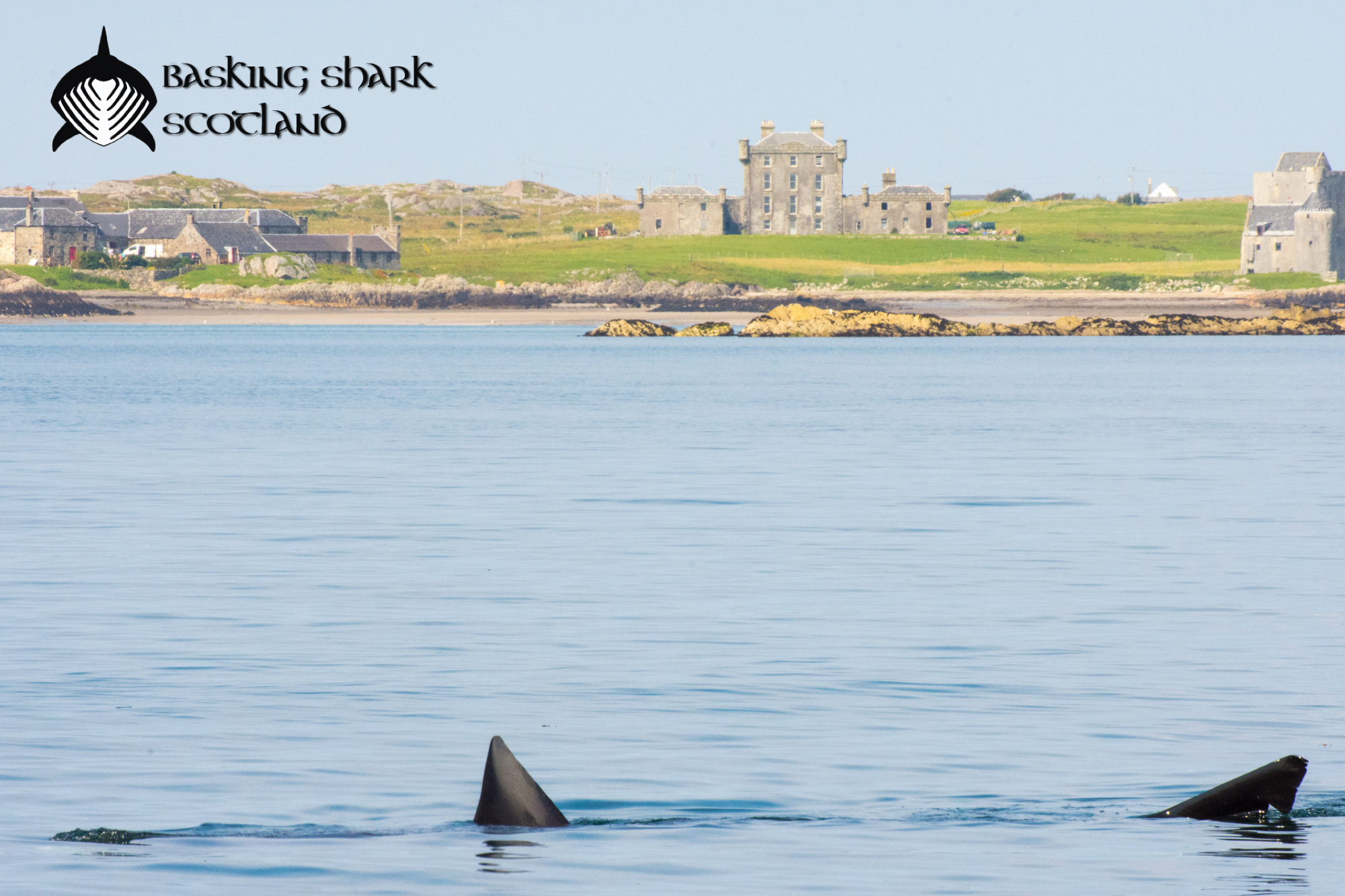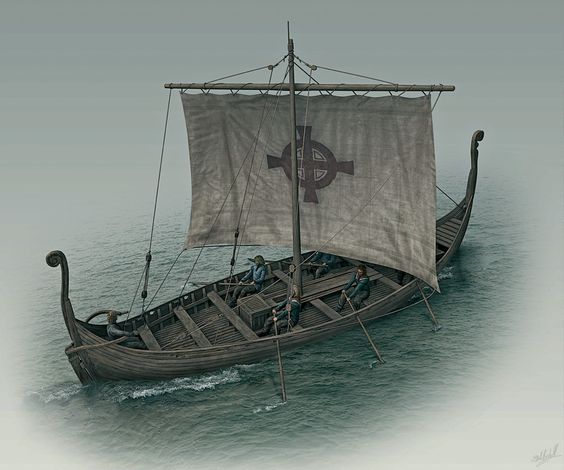
How the basking shark was given it’s name!
May 12 2020

What’s in a name – how the basking shark was given its name!
Our old friend the basking shark has a lot of history surrounding its name which changes over many areas and nations. Shane spent a bit of time during lockdown tracking down a few stories!
We discussed this topic in our podcast – shark-cast so have a listen through that too. Find it on all the podcast hosting sites or you can listen directly here:
Scientific
Cetorhinus maximus – this is the scientific name for a basking shark and does not change worldwide. This is the only true name that doesn’t change across the world. However, it is a bit of a mouthful to say!Breaking down the parts of this name reveals things about the shark’s features. The original description was given by Gunnerus, a Norwegian bishop and botanist who described a basking shark in 1765. Originally it was named Squalus maximus – meaning greatest/largest fish/shark (at that time in Europe they were unaware of the larger whale shark). There were also a number of other naming suggestions over the years, but the accepted and more recent Latin name can be broken down as follows:
Ceto – from the Greek Ketos meaning sea monster or whale.
rhinus – from the Greek meaning nose/snout.
maximus – from Latin for greatest/largest.
Scottish
Before we get into the common name, basking shark, it’s worth mentioning the Scottish (and Irish) names for the basking shark as this will give clues to the origins of the current name.
There are many names for the basking shark around the Scottish and Irish coast with the sharks being very abundant here for centuries. With many islands, the sea was the highway for transport and trade. You see many castles next to the coast as whoever controlled the waterways then controlled the area. Fishing was also important through the ages to provide food. As maritime people, our ancestors would have also lived alongside marine life. Although we don’t have a large history, as much of it would have been before written accounts, names give clues to some of the stories.
There are differences in the names within Scotland as there are many dialects and influences such as Gaelic and Norse. Our favourite is the Scots Gaelic, cearban, which is what our boats are called. As we move around the coast, ‘pricker’ is an obscure-sounding one from the NE coast and perhaps a Doric variant. In Shetland, they have ‘brigda’, which would have Norse connections. Then there are others such as carfin, muldoan, hoe-mother, and the more recent popular ones of sailfish and sunfish.
Sail-fish is an interesting one, it likely originated from the huge dorsal fin which can stick out of the water like a sail. The Irish also had a Gaelic name for this which was Ainmhí Sheoi. This translated to the beast with the sail. However, it is not to be confused with the actual sailfish which is the fast fish with a long bill and very long connected dorsal fin.
We then get to name sunfish, which could be the connection to our modern common name. As the sunfish name is historical then there is no exact answer, but this is the widely accepted origin.

In terms of basking shark behaviour, when the weather is settled with calm sunny seas, it’s much easier to spot basking sharks at the surface. These conditions can also lead to very concentrated plankton making surface feeding much more efficient and desirable for the sharks. You are much more likely to see them during these conditions.
This is not always the case and they do feed at varying depths depending on the conditions at the time. The early mariners may have connected the shark’s increased presence, by spotting them more often during these conditions and connected this with the sun and named them sunfish.
It’s like putting 2+2 together and getting 5. Some elements are true but the result isn’t quite right. This then leads to the most modern name ‘basking shark’.
English
In 1769 Welsh Naturalist Thomas Pennant invented the new name ‘basking shark’ to remove confusion with the already-named sunfish. He had also toured around Scotland and witnessed a basking shark following a hunt at Lochranza in Arran (although this was 1772 after he had given the name). Although at this time ‘sunfish’ was more likely to be used in Wales rather than in parts of Scotland, which had the specific names above. In Irish Gaelic ‘liamhán gréine’ – means great fish of the sun. If translated at the time then they all have the same connotations.
The name had changed but the meaning behind it was still mistaken. They still thought that the shark was basking at the surface in the sunshine, perhaps assuming this based on behaviours from other animals. A common English name we have had basking shark ever since! But as we all know – they are not basking! Perhaps we should start a campaign to change the name to something more accurate! What would your choice be? For some ideas see below for some other names from around Europe!
Europe
What we need to remember is that the basking shark name is an English common name and not applicable in other languages. Other countries have different common names for Cetorhinus maximus to give the shark it’s correct name.
German/Dutch – Riesenhai / Reuzenhaai
The common name translation here is ‘giant shark’, and of course relates to their size. You do wonder that it was likely given at a time when the whale shark wasn’t known about (as this is a larger species than the basking, truly a giant shark!) but does not occur in those waters.
Italian – Squalo elefante
Translating to English this means ‘elephant shark’! This name perhaps references the sharks protruding nose whilst feeding. Or perhaps the skin texture, which looks very elephant-like! In recent times there seem to be several juveniles sighted in certain parts of the Italian coast. If there is a nearby pupping ground that has been for many years, then perhaps the name originated from the odd-looking snout of the young ones! For a blog of when we had our first sighting then see here.
French/ Portuguese / Italian / Spanish- Requin pèlerin / Squalo pellegrino / Tiburón peregrino
Again another interesting translation and one at face value that is perhaps one of the nicest names, but a red herring in its origin.
Due to recent scientific discoveries with tagging, far more has been discovered in the last 10 years than we ever knew about their huge migration paths. They can travel thousands of miles and dive to well over 1000m in depth.
In terms of a name, the translation is pilgrim shark and connects nicely to this migration regarding a pilgrimage! Of course, a migration to the stunning Hebrides could easily be called that along with the presence of St Columba’s Abbey on Iona then many do make a real pilgrimage!
Despite the nice inferences to pilgrimages, journeys and how that fits nicely with the sharks travels, there is evidence that the name pilgrim doesn’t refer to a journey at all. This is likely, as at the time the name was given, the sharks migration was not yet known and they just appeared at various times. Many people assumed that the sharks just went to deep water outside of summer, so why would they have used the name pilgrim shark?
The reference for the pilgrim names in French comes from Alfred Brehm, a German Zoologist. In the 1885 French Edition of his book, Les poissons et les crustacé , the pilgrim reference was noted to the shape of the basking shark’s gills looking like the coats/collars of pilgrims and specifically the frills of the collar. Of course, much of Europe was highly religious at the time so this type of connection would make sense!
USA/Canada
Another interesting name is ‘bone shark’! This is an odd choice, as we all know that sharks have cartilage and not bones. They are unlike whales for example where a washed-up carcass can leave a large skeleton, the sharks cartilage skeleton breaks down rather quickly and doesn’t resemble the full animal. However, in that lies the link to the name.
It is said that the name links back to whalers and their attributing features of whales in naming them. The resemblance or comparison of the large gill rakers of the shark to a whalebone structure or baleen was where the ‘bone’ element originated.
Iceland
Interestingly, the name bone shark (Beinhákarl) is also used there, perhaps an influence from the early whaling days. There is a written history of this name going back to 1874, but we haven’t found an exact reference to the ‘bone’ element. We could suggest there may have been a connection with mariners and whalers sharing the term from the US/Canada. However, it was mainly Norwegian & Spanish whaling fleets in Iceland! Albeit this would remain the most likely origin. As English is also widely spoken in Iceland, they are also known as basking sharks too.
Poland
We had one of our followers on social media send us the Polish version. They advised that a couple of names include ‘długoszpar’, which means long crevice and alludes to the long gill slits on the sharks. They also have ‘rekin słoneczny’, which means sun shark and has a connection to all the same meaning as above!
Japanese
Another great cultural story is from Japan where the name ‘ubazame’ which we understand means old lady’s skin shark! What an amazing description! The skin is so unique on basking sharks, looking wrinkly, prehistoric, or elephant-like – many people describe it differently! But we love this one from Japan!
Norway
This was debated in Norwegian marine biologists forums and again could conjure up another brilliant story! Brugda isn’t an obvious modern word as it comes from old Norse and the time of the Vikings. In Norse ‘a bregda sverdet’ means to swing the sword, and could be linked to how a basking shark dorsal fin cuts through the surface of the water like how a sword swings and cuts through the air! Another suggestion was the word was related to ‘beat’ and could be to do with beating the tail and the motion of the tail beating through the water. If you’ve watched a basking shark on the surface, both the dorsal and tail are very distinct movements, and so the Vikings have described it so well.
If any of our followers from other countries have different names and versions it would be great to hear them!
Here’s a video we made, thanks to friends and clients from different backgrounds we have a compilation of many different pronunciations of ‘basking shark’ in different languages.






